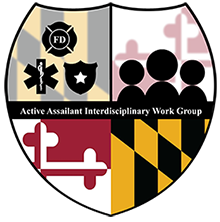Families & Individuals
Below are resources designed to assist families and individuals with understanding how to prevent, prepare for, and respond to an active assailant incident. Families and individuals are encouraged to utilize these resources as a starting point. Families and individuals should also review the materials and resources available on the Prevention and Early Intervention section of this website for additional information.
Preparedness
https://www.youtube.com/watch?v=aPOPH_xtmQk&feature=youtu.be
This video was created by Brigham Young University and presents a scenario that provides guidance on actions to take if you find yourself in a mass shooting incident.
https://lasd.org/active-shooter/
Video and website created by the Los Angeles County Sheriff’s Department that is highly effective showing various types of locations (work, soft targets, educational facilities, etc.) where an active assault could occur. It provides the audience with tools that can assist in how to respond effectively during a rapidly evolving incident.
https://www.youtube.com/watch?v=j0It68YxLQQ&feature=youtu.be
This video was created by the Advanced Law Enforcement Rapid Response Training (ALERRT) program at Texas State University. This video shows the Avoid-Deny-Defend method which was developed for individuals to be easy to remember.
https://www.youtube.com/watch?v=5VcSwejU2D0&feature=player_embedded
The City of Houston (Ready Houston) created this effective video on what to do in the event of an active assailant in an office environment.
Training & Exercises
https://alerrt.org/CivilianResponse
The Civilian Response to Active Shooter Events (CRASE) course, designed and built on the Avoid, Deny, Defend (ADD) strategy developed by ALERRT in 2004, provides strategies, guidance, and a proven plan for surviving an active shooter event.
https://www.ready.gov/sites/default/files/2020-07/until-help-arrives-web-tutorial.pdf
Training video and web-based training course created because life-threatening emergencies can happen fast, and emergency responders aren’t always nearby. These injuries can require immediate action to prevent an injured person from dying, so those nearest to someone are best positioned to provide first care.
One of the best ways to increase a person’s likelihood of survival when severely injured during active assailant incident is to quickly stop severe bleeding. Coworkers can provide initial life-saving measures. The Stop the Bleed® site provides resources on how to organize an in-person training, life-saving strategies and posters, instructional videos, and aid kits to place in common areas.
Survivor & Victim Assistance
https://www.nctsn.org/what-is-child-trauma/trauma-types/terrorism-and-violence/mass-violence
The National Child Traumatic Stress Network (NCTSN) created a number of resources on mass violence including “Parent Guidelines for Helping Youth After the Recent Shooting,” “College Students: Coping After the Recent Shooting” and “Age-Related Reactions to a Traumatic Event.”
https://www.nmvvrc.org/survivors/self-help/
National Mass Violence and Victimization Recovery Center provides resources for victims of a mass violence incident to help them learn important skills and coping strategies.
https://ovc.ojp.gov/news/announcements/view-resources-victims-recent-mass-violence-incidents
The Department of Justice, Office of Justice Programs, Office for Victims of Crime created a list of resources for specific mass schooling events, which help victims and their families and the first responders and other professionals providing support to them.
https://ovc.ojp.gov/help-for-victims/terrorism-and-mass-violence
The Department of Justice, Office of Justice Programs, Office for Victims of Crime provides a list of programs and publications that can help victims understand and manage reactions to terrorism and mass violence.
Supporting-After-Violence.pdf (schoolmentalhealth.org)
The National Center for School Mental Health (NCSMH) at the University of Maryland School of Medicine (UMSOM) compiled a list of websites and free resources to help support youth, families, schools, and communities impacted by violence.
Mental Health and Crisis Resources for Coping with Violence
The Maryland Department of Health compiled a resource guide which provides tips and resources for those impacted by violence, including youth, parents and caregivers, teachers and behavioral health professionals.
Virtual Resiliency Center | VRC (massviolence.help)
The Virtual Resiliency Center provides resources and information to help individuals and communities recover from mass violence.

